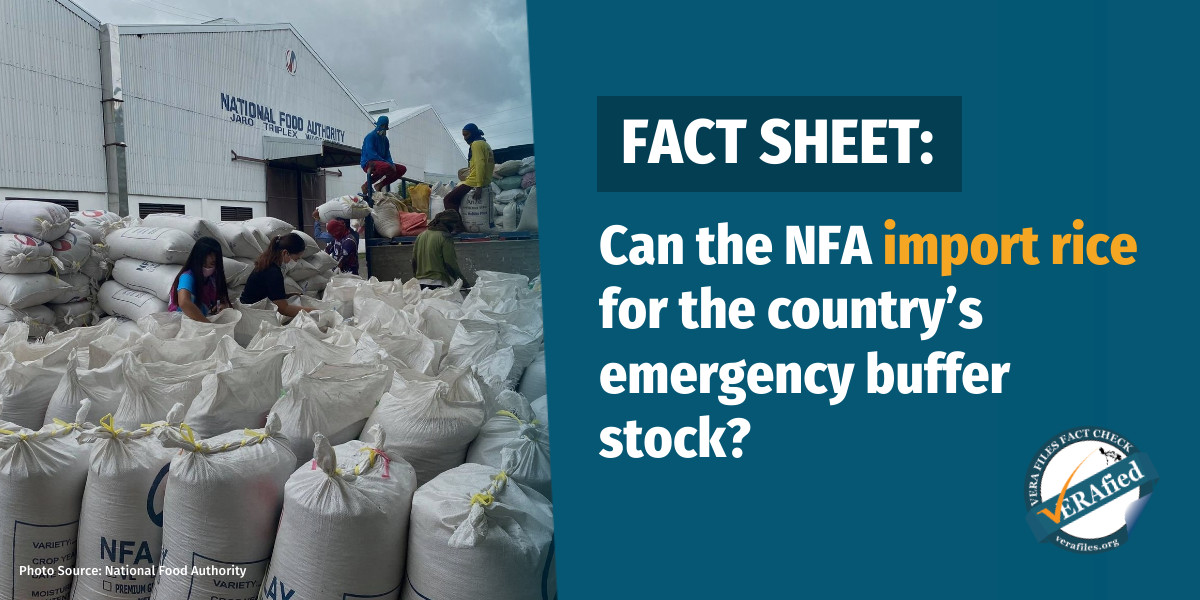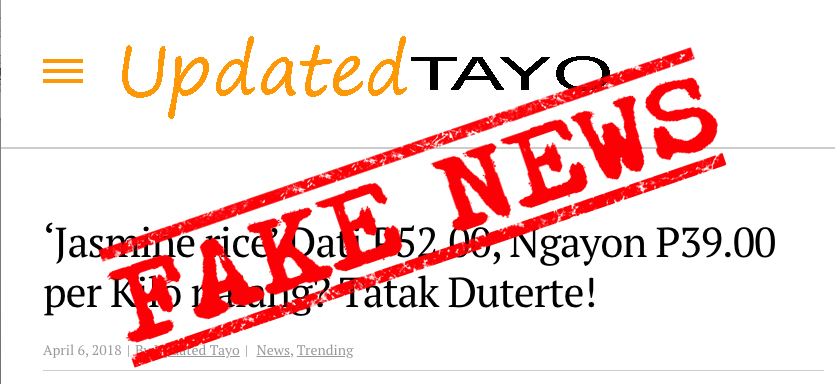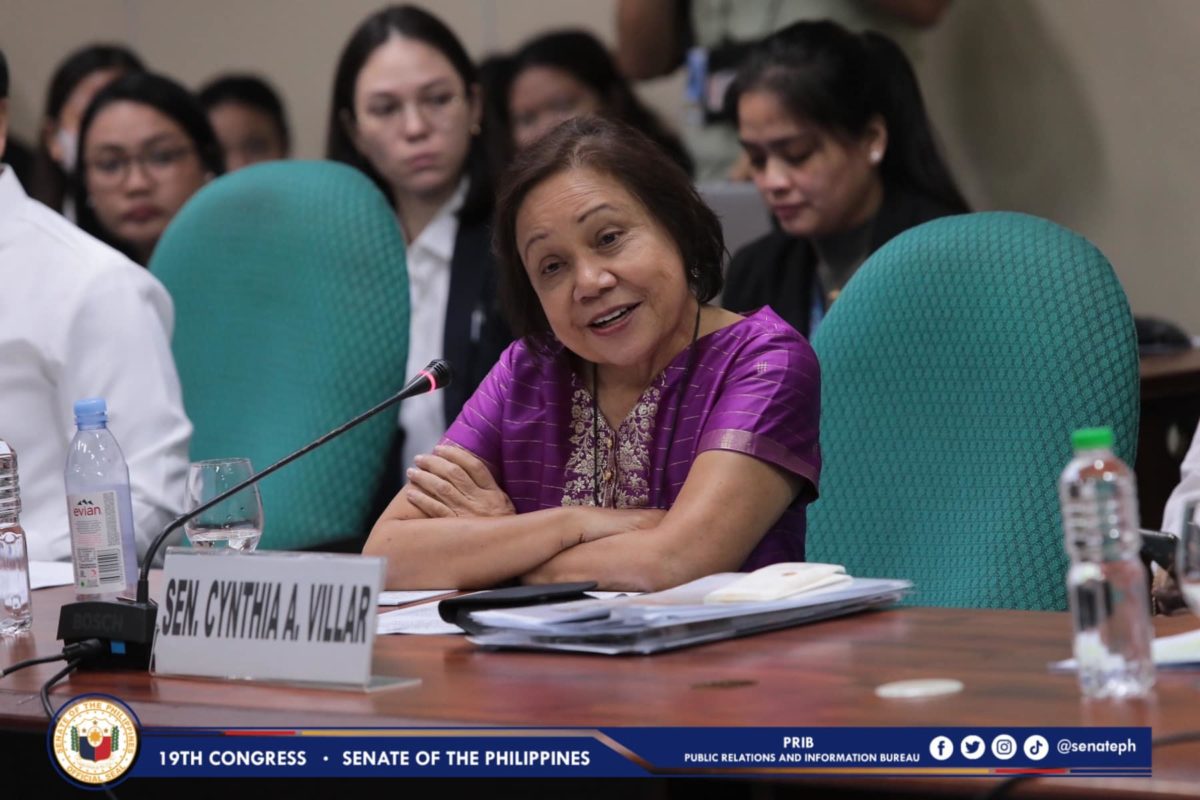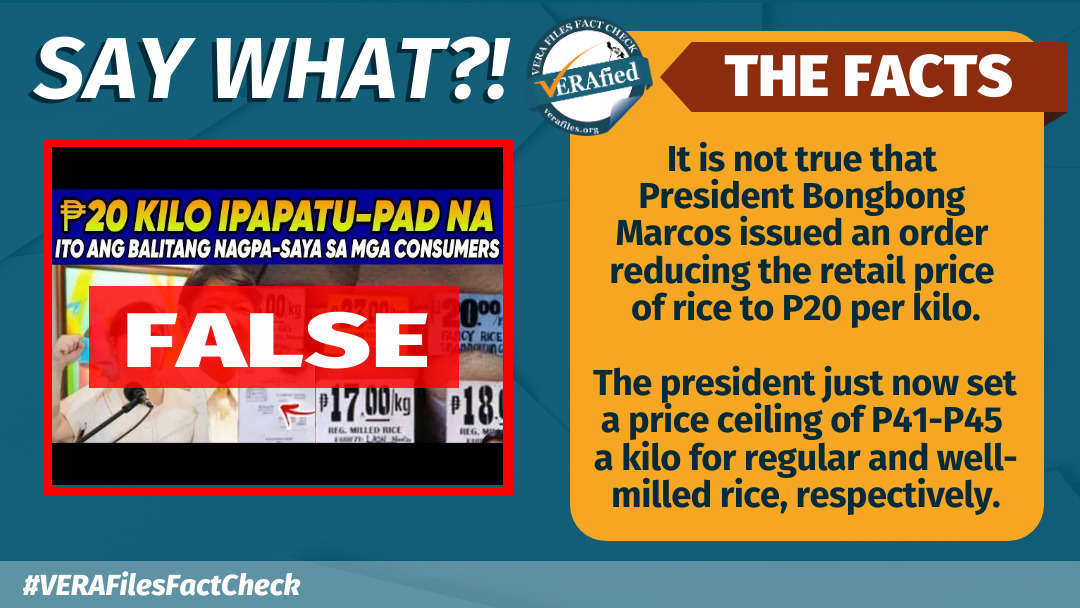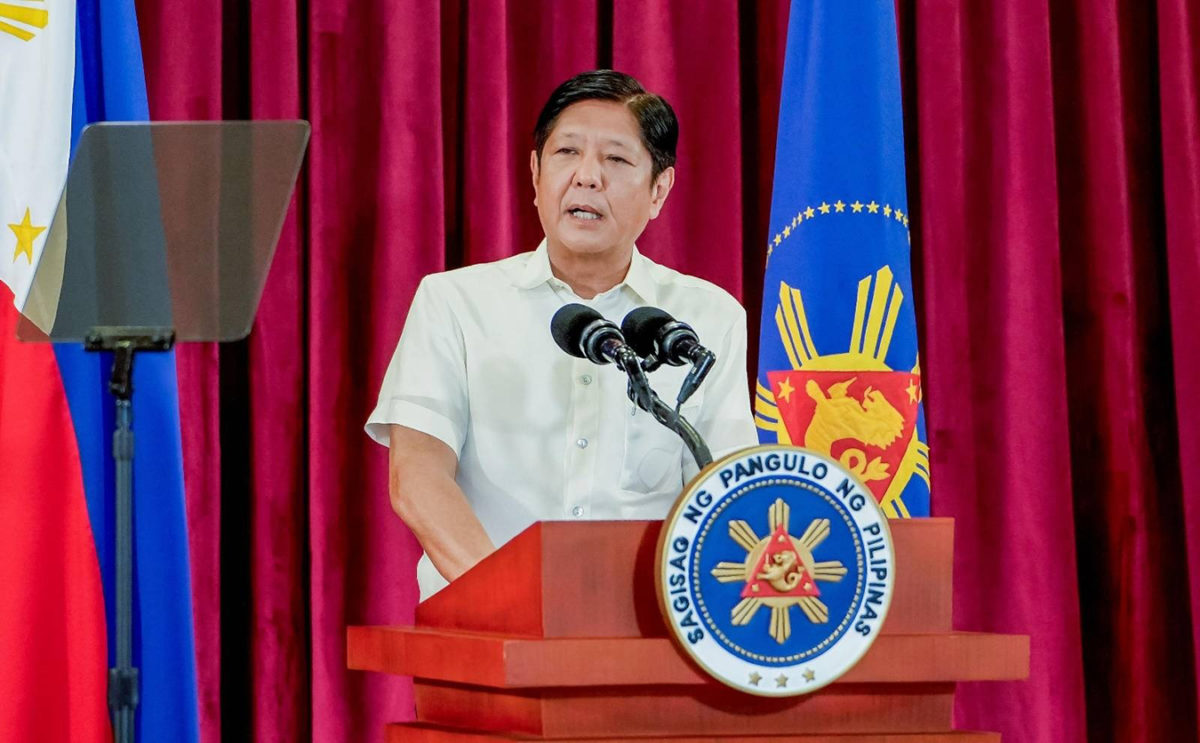A news release from the Presidential Communications Office on April 13 said the National Food Authority (NFA) was proposing to import 330,000 metric tons of rice to cover a projected deficit in the country’s emergency buffer stock.
In a letter to the president, NFA recommended that this be done via a government-to-government transaction coursed through the Department of Social Welfare and Development (DSWD).
On April 18, however, Department of Agriculture (DA) Undersecretary Mercedita Sombilla said the NFA will no longer import because it goes against the law.
Can NFA import rice for its emergency buffer stock?
1. What is the mandate of the NFA?
The NFA is a government agency in charge of buying palay and maintaining the optimal level of rice buffer stock in the country.
It is tasked to “manage efficiently and effectively the acquisition, quality maintenance, and disposition of the buffer stock during emergencies and calamities.”
Formerly known as National Grain Authority, the NFA was established through Presidential Decree (PD) No. 4 in 1972 to promote the growth and development of the country’s grain industry.
In 2014, the NFA was reassigned to the Office of the President through Executive Order No. 165. The agency’s function turned into ensuring the country’s food security and the supply and price stability of rice through various activities and strategies
However, with the signing of the Rice Tariffication Law or Republic Act No. 11203 in 2019, the NFA was transformed from a trading and regulating agency to a solely buffer stocking agency.
Currently, the agency sells rice to government agencies and wholesalers at P25 per kilo through the Kadiwa program. It follows a “buy high, sell low” formula, where it purchases palay from local farmers at a fixed support price, mills these to rice with the help of local millers and sells the rice at a loss.
2. Can the NFA import rice for the country’s emergency buffer stock?
In February 2019, then president Rodrigo Duterte signed the Rice Tariffication Law which refocused the NFA’s role.
It mandated the agency to “maintain sufficient rice buffer stock to be sourced solely from local farmers” as well as distribute rice during emergency and calamity situations and sustain the government disaster relief program.
The law allows the private sector to freely import rice subject to a tariff. All rice importers, however, must secure a Sanitary and Phytosanitary Import Clearance from the Bureau of Plant and Industry (BPI) and comply with other import guidelines set by the BPI and the DA under RA 11203.
The importation plan initially proposed by NFA mentioned a government-to-government transaction coursed through the DSWD.
However, DA undersecretary for rice industry development Leo Sebastian said in an interview with VERA Files that under normal circumstances, government-to-government rice importation using NFA funds is not allowed.
“If it’s NFA that will be using the credit lines, saka siya ‘yung magpi-finance, hindi pwede (and finance, is not possible),” Sebastian said.
“Ang worry lang talaga ni (The worry of the) president ay ‘yung mababang (is the low) level ng (of) buffer stock ng (of the) NFA. So we have been assuring him also that we have enough supply. We just have to push the NFA to procure more stock locally. ‘Yun ang kailangang gawin (That is what we have to do),” he added.
Sebastian explained that government-to-government importation may be authorized by the president during an emergency when there’s a huge shortage in local rice supply. The Philippine International Trading Corporation would be in charge of such emergency importation.
3. Why does it matter?
Interviewed by The Philippine Star on April 10, Agriculture Assistant Secretary and Deputy Spokesperson Rex Estoperez said that the country’s rice inventory would further decrease if farmers, especially those in rain-fed areas, would not be able to plant rice as many farmlands begin to dry out ahead of the expected drought in the second half of 2023.
Earlier in March, the Philippine Atmospheric, Geophysical and Astronomical Services Administration upgraded its monitoring of oceanic temperatures to an El Niño Watch, with 55% probability that El Niño would be declared.
According to the state weather forecaster, El Niño is characterized by “unusually warmer than average sea surface temperatures in the central and eastern equatorial Pacific” which results in expected below-normal rains, dry spells and droughts in several areas of the country.
In a video interview on April 13, President Ferdinand Marcos Jr. said that while the country’s rice supply seems sufficient for the rest of the year, the NFA’s rice buffer stock is too low so the government may have to buy more of the staple from local producers and abroad.
Almost a week later, however, the DA reported that the country’s rice supply remained stable.
A study by the DA’s National Rice Program estimated that the stock of palay at the end of the first quarter of 2023 was at 5.66 million metric tons and good for 51 days.
Sebastian reiterated this to VERA Files, adding that supply is sufficient but if there should be a rice shortage, the private sector can always import more.
“Wala namang nag-i-stop (No one’s stopping) [private imports] and the government can also encourage the private sector to bring in more,” he said.
However, the agency warned of a possible price increase. According to the report, farmgate prices for dry palay on April 3 increased to P21.07 per kilo compared to P19.23 in March.
The DA said that while the dry season provides “better conditions for drying newly harvested palay,” prices may go up depending on “any situational changes” such as added value due to the high quality of dry palay.
